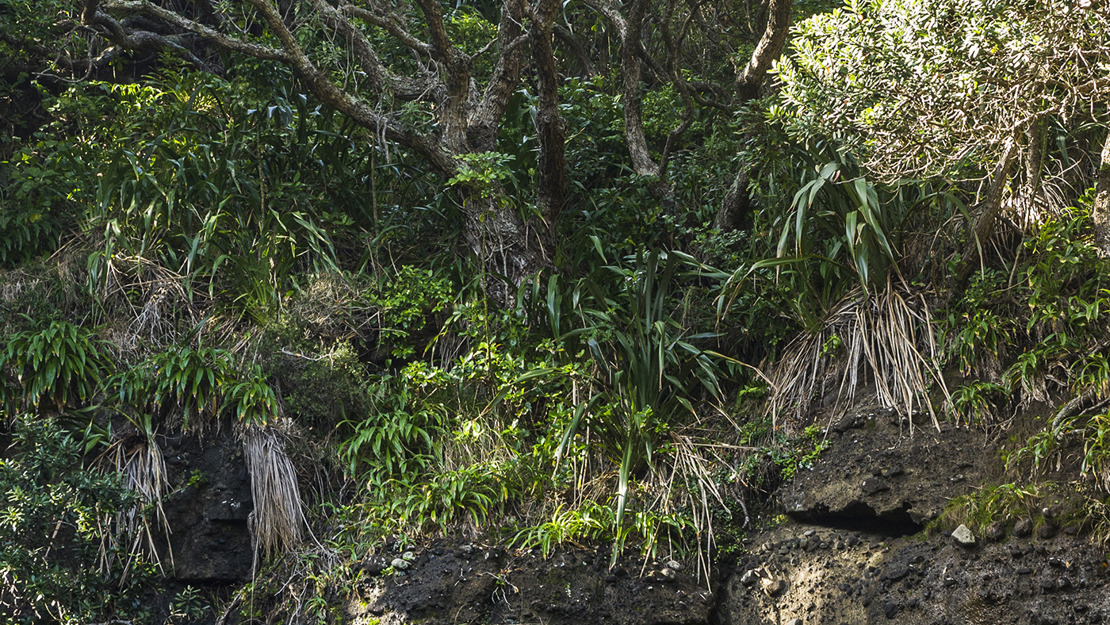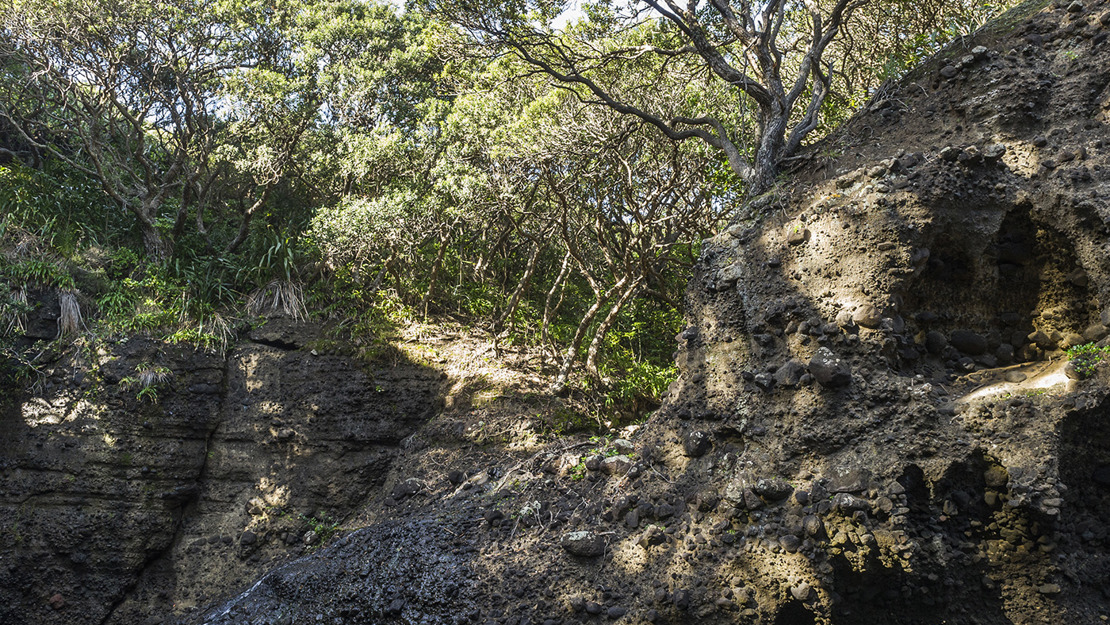Pōhutukawa treeland, flaxland and rockland ecosystem (CL1)
This ecosystem occurs on coastal rock faces and eroding hill-slopes around the Auckland coastline and on offshore islands. It contains a mosaic of different plant communities including herbs, flax, shrubs and trees.
Cliff ecosystem
About this ecosystem
Salt spray, exposure to winds and steep, dry slopes are the key factors that influence the distribution and extent of this ecosystem.
Active erosion influences the plant communities composition. As a result, there is often a mosaic of plant communities present.
In Auckland, some of the best examples can be seen on the west coast from south Muriwai to Whatipu.

Flora and fauna of this ecosystem
Pōhutukawa establishes readily on bare ground. It is well adapted to tolerate salt-laden winds. Other species that are common in this ecosystem include:
- harakeke
- karo
- rengarenga lily
- hebe
- kawakawa.
On the islands, where pest animals have been eradicated, this ecosystem provides a habitat for:
- kākā
- tūī
- burrowing petrels
- skinks
- geckos.
On the mainland, the more common native bush birds such as ruru (morepork), kōtare (kingfisher), and pīwakawaka (fantail) are often present.

Threats to this ecosystem
This ecosystem is classed as vulnerable.
It is particularly vulnerable to weeds such Mexican daisy and pampas. Vegetation disturbance and erosion are constant factors that influence species composition.
In many areas, possums remain the most significant animal pest. They browse palatable species such as pōhutukawa and have caused die back across northern coastlines. This has made the cliffs even more vulnerable to erosion and weed invasion.



